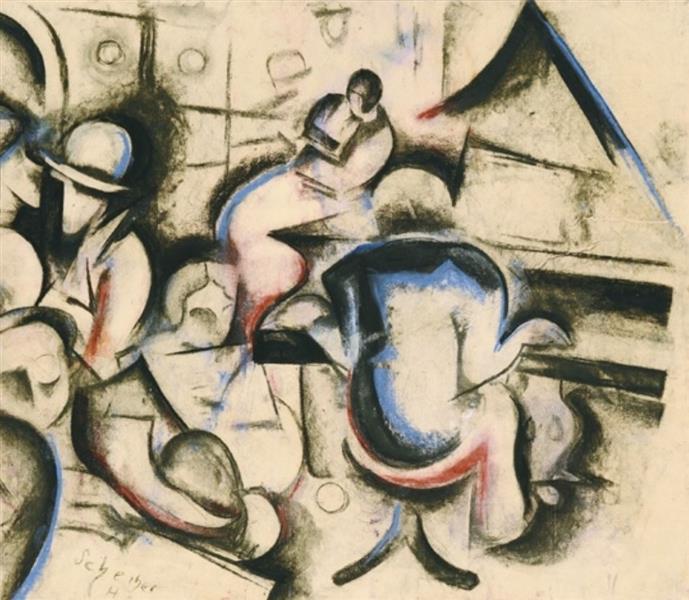Description
The work "Barjelenet" by Hugó Scheiber is a significant manifestation of the use of color and light in the painting of the twentieth century, representing with lively a scene that evokes both the essence of everyday life and human interaction with its environment. Scheiber, a prominent Hungarian painter, is known for his post -impressionist style and his focus on the representation of light in landscapes and social scenes, and "Barjelenet" is a testimony of his mastery in these aspects.
In this painting, the composition is built through a dynamic dialogue between human figures and the natural environment. The elements are organized in a way that guides the viewer's view, starting from the forefront where the figures seem to interact with the space that surrounds them, and extending towards a background that suggests depth and context. The figures, although they are not the only approach to the work, are essential to enrich the visual narrative, transmitting a sensation of community and connection, which is perhaps one of the deepest issues of Scheiber's work.
Color is another aspect that stands out in "Barjelenet". The palette he uses is vibrant and full of nuances, with a concomitance of shades that provide both warmth and freshness. The yellow and blue tones are intertwined with agility, creating an environment that not only represents daylight, but also infuses the painting With a vivifier energy. This color attention reflects the influence of impressionism, but Scheiber carries out its own interpretation, using color to build not only visual space, but also to evoke emotions.
The technical aspects of execution are also worthy of mention. The brushstroke is gestural and determined, which suggests an intuitive approach to the creation process. This use of active brushstrokes not only provides interesting textures, but also establishes a visual rhythm that invites the viewer to stop and reflect on the interaction of the elements in the painting. The luminous color areas contrast with shadows that in turn reveal the complexity of the scene, suggesting the ephemeral of light and time.
The historical context of the work is also relevant. Being located in the first half of the twentieth century, "Barjelenet" reflects the concerns of its time, as well as the search for cultural identities in a Europe that began to face social and political challenges. The work, in its apparent simplicity, can be interpreted as a tribute to everyday life and shared moments, something that Scheiber captures with a particular sensitivity.
While Hugó Scheiber's painting often evokes light and nature, "Barjelenet" stands out in showing a vibrant social scene that resonates with the feelings of community and belonging. This work is not only an example of Scheiber's technical domain, but also serves as a reminder of the beauty of human interactions in the environment, encapsulating a moment that transcends time and is established as a powerful commentary on life. Thus, "Barjelenet" stands as a testimony of the legacy of an artist who continued to explore and redefine the role of color and light in painting, consolidating his place in the history of Hungarian and European art.
KUADROS ©, a famous paint on your wall.
Hand-made oil painting reproductions, with the quality of professional artists and the distinctive seal of KUADROS ©.
Art reproduction service with satisfaction guarantee. If you are not completely satisfied with the replica of your painting, we refund your money 100%.

